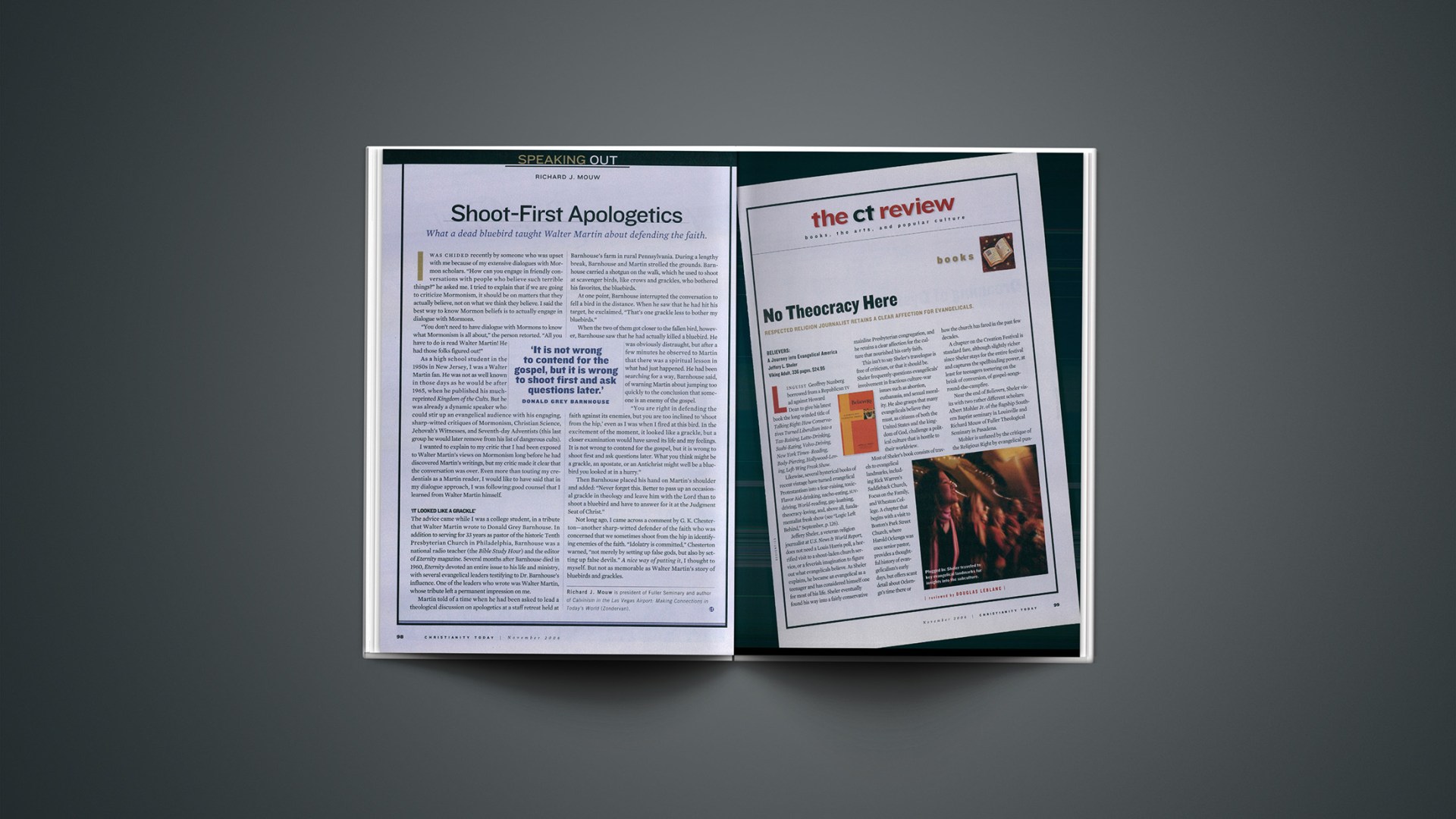I was chided recently by someone who was upset with me because of my extensive dialogues with Mormon scholars. “How can you engage in friendly conversations with people who believe such terrible things?” he asked me. I tried to explain that if we are going to criticize Mormonism, it should be on matters that they actually believe, not on what we think they believe. I said the best way to know Mormon beliefs is to actually engage in dialogue with Mormons.
“You don’t need to have dialogue with Mormons to know what Mormonism is all about,” the person retorted. “All you have to do is read Walter Martin! He had those folks figured out!”
As a high school student in the 1950s in New Jersey, I was a Walter Martin fan. He was not as well known in those days as he would be after 1965, when he published his much-reprinted Kingdom of the Cults. But he was already a dynamic speaker who could stir up an evangelical audience with his engaging, sharp-witted critiques of Mormonism, Christian Science, Jehovah’s Witnesses, and Seventh-day Adventists (this last group he would later remove from his list of dangerous cults).
I wanted to explain to my critic that I had been exposed to Walter Martin’s views on Mormonism long before he had discovered Martin’s writings, but my critic made it clear that the conversation was over. Even more than touting my credentials as a Martin reader, I would like to have said that in my dialogue approach, I was following good counsel that I learned from Walter Martin himself.
‘It Looked Like a Grackle’
The advice came while I was a college student, in a tribute that Walter Martin wrote to Donald Grey Barnhouse. In addition to serving for 33 years as pastor of the historic Tenth Presbyterian Church in Philadelphia, Barnhouse was a national radio teacher (the Bible Study Hour) and the editor of Eternity magazine. Several months after Barnhouse died in 1960, Eternity devoted an entire issue to his life and ministry, with several evangelical leaders testifying to Dr. Barnhouse’s influence. One of the leaders who wrote was Walter Martin, whose tribute left a permanent impression on me.
Martin told of a time when he had been asked to lead a theological discussion on apologetics at a staff retreat held at Barnhouse’s farm in rural Pennsylvania. During a lengthy break, Barnhouse and Martin strolled the grounds. Barnhouse carried a shotgun on the walk, which he used to shoot at scavenger birds, like crows and grackles, who bothered his favorites, the bluebirds.
At one point, Barnhouse interrupted the conversation to fell a bird in the distance. When he saw that he had hit his target, he exclaimed, “That’s one grackle less to bother my bluebirds.”
When the two of them got closer to the fallen bird, however, Barnhouse saw that he had actually killed a bluebird. He was obviously distraught, but after a few minutes he observed to Martin that there was a spiritual lesson in what had just happened. He had been searching for a way, Barnhouse said, of warning Martin about jumping too quickly to the conclusion that someone is an enemy of the gospel.
“You are right in defending the faith against its enemies, but you are too inclined to ‘shoot from the hip,’ even as I was when I fired at this bird. In the excitement of the moment, it looked like a grackle, but a closer examination would have saved its life and my feelings. It is not wrong to contend for the gospel, but it is wrong to shoot first and ask questions later. What you think might be a grackle, an apostate, or an Antichrist might well be a bluebird you looked at in a hurry.”
Then Barnhouse placed his hand on Martin’s shoulder and added: “Never forget this. Better to pass up an occasional grackle in theology and leave him with the Lord than to shoot a bluebird and have to answer for it at the Judgment Seat of Christ.”
Not long ago, I came across a comment by G. K. Chesterton—another sharp-witted defender of the faith who was concerned that we sometimes shoot from the hip in identifying enemies of the faith. “Idolatry is committed,” Chesterton warned, “not merely by setting up false gods, but also by setting up false devils.” A nice way of putting it, I thought to myself. But not as memorable as Walter Martin’s story of bluebirds and grackles.
Richard J. Mouw is president of Fuller Seminary and author of Calvinism in the Las Vegas Airport: Making Connections in Today’s World (Zondervan).
Copyright © 2006 Christianity Today. Click for reprint information.
Related Elsewhere:
Richard Mouw is also a columnist for Beliefnet.
Mouw also wrote on “disconnected selfhood” in an intriguing article titled “Babel Undone” for the May 1998 issue of the magazine First Things.
Earlier Christianity Today articles by Richard Mouw include:
This World Is Not My Home | What some mainline Protestants are rediscovering about living as exiles in a foreign culture. (April 24, 2000)
Mormon Makeover | An effective evangelical witness hinges on understanding the new face of Latter-day Saints. (Mar. 9, 2000)
Just Saying ‘No’ Is Not Enough | A Christianity Today forum on homosexuality and public policy. (Oct. 4, 1999)
Abraham Kuyper: A Man for This Season | The surprisingly relevant advice of a Dutch statesman for engaging postmodern culture. (Oct. 5, 1998)
Science with Baloney Detectors | How to discern the truth when popular advocates of competing perspectives on science indulge in a little showmanship (Dec. 8, 1997)
To the Jew First | Witnessing to the Jews is nonnegotiable (Aug. 11, 1997)










